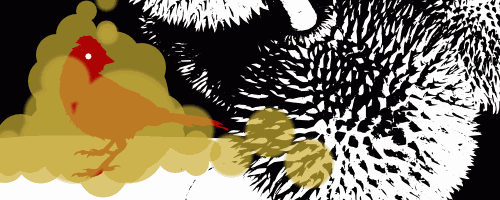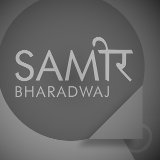
The Durian is hard thorny fruit on the surface with a soft flesh inside. It is purported to taste divine and smell foul, and it gets its name from duri in Malay, which means thorns. A very conflicted fruit for sure.
A dust bath is exactly what it sounds like. Birds often push dirt into their feathers to dislodge parasites that take up residence there. Other animals do this too. Who’d have thought flinging dirt could help make you cleaner?
These two seemingly unrelated things came before me yesterday, and they brought to mind the general perception of accepting the unpleasant, the hard, and the arduous to get positive results. It struck a cord because I had just finished skimming through an article on Homoeopathy, with all the usual one-sided arguments that I often see. They are always arguments, in the worse sense of the word, because writers on contentious topics like Homoeopathy have made up their mind a long time before they put down the first sentence. It’s a belief thing.
For example, this particular writer, who was playing the scientific intellectual card, ended with an appropriately horrific story of an infant dying of eczema because the parents stuck to homoeopathic treatment. This was meant to be a cautionary tale about the dangers of Homoeopathy. Yet as always, these shock tactics did not consider the opposing facts, like how many people suffering from not so fatal ailments are killed by secondary complications and the effects of religiously sticking to conventional medicine and not trying alternatives. When such obvious arguments are brought up against any established norm, the idea of having to pay the price for the greater benefit always comes up as validation. Everyone wants you to eat that mythically perfect durian, with the hard thorny shell, and the horrid smell. It’s good for you.
Keeping within the realm alternative health therapies for now, let’s consider something like massage. Its therapeutic prowess cannot be measured in any practical way while accounting for the placebo effect; There is no such thing as a placebo massage. A massage is a massage, and it affects mind and body, whether you like it or not. Which brings to fore the artificiality of the imposed mind-body divide in these examples, and the artificiality of similar strict binary divisions of various other aspects of life and thought.
These differences in opinion are often slated as an argument between scientific thought and blind faith, but what this sort of arm-chair science ignores is that science is, and always has been, as much about considering all the possibilities and being open to new radical hypotheses, as it is about proving things. We should never forget that science has been responsible for as many missteps, and a supporter of as much dangerous misinformation, as blind-faith. Today’s science is often tomorrow’s superstition. On either side, it is the assumed infallibility that is the true danger.
It comes down to two opposing belief systems. One that states all things worth doing or experiencing come with a hefty price to pay in suffering of some sort. The other states that everything of worth flows smoothly and naturally into its perfect state. Whether we realise it or not, most of us hold one of these beliefs to be true, and apply this logic to how we see the world. You could grossly simplify it down to pessimism and optimism, but it really is more than that. These are mental models of how you think world works, and frankly, they are both wrong. Both paradigms start with the assumption that there is some morality to existence, and that paying the price has some intrinsic moral value.
If you are a creative person and deal in the currency of ideas, this issue is a more important one that you realise. In formulating, evaluating, and deciding between sometimes opposing creative ideas, this belief system plays a key role in the choices you make. Are you making the right choices, or simply the ones you believe in? That is the question you need to be asking yourself at all times.
Which neatly brings us to the question of what the “right” choice is and if it can be clearly defined. As with all things, there exist some grey areas here, but of all the decisions I’ve talked about here, I think the decision between right and wrong choices might be the simplest to referee. There are no universally right choices to be sure, but the majority of creative thinking is applied to the solution of a problem. This problem might be a practical one or an abstract one, but every idea you define is in answer to a question. In the specific situation and context that you need that question answered, there most certainly is a right choice, because one meets with all your objectives and one doesn’t. There is little ambiguity there.
So when you’re dabbling in the realm of creative thinking, which you should be doing no matter what your work or life entails, make sure you are choosing what ideas to pursue based on what is right for your needs, rather than what is difficult or easy. There is no mystical blessing of rightness that goes with pursuing a difficult idea, nor is there a similar guarantee when you go with what seems like the easy solution. Judge ideas based on their own merit and what they provide in results, not based on whether or not it involves you showering yourself with enough dirt along the way.
Samir
This post was brought to you by the letter D. Well, at least that page about the letter D in my trusty old dictionary that I ended up on while brain storming for ideas about what to write. I spotted the words durian and dust bath, and this is what resulted.
Liked this article? Please share it: ![]()
![]()
![]()
![]()
![]()
![]()



Samir,
you
Thank you for reading my rambling.
Nice one! But I suspect you have not yet consumed the fine fruit that is the durian!!
Your suspicion is partly true. I have tried durian but not in its fresh, straight from the thorny gourd, state. So I imagine I have experienced nowhere near the richness of bouquet that the actual fruit brings to the table. 😉
Still, it served as a perfect launch point for my slightly unstructured stream-of-consciousness. Glad it worked on some level. Thanks for reading.
Debunking the “mehnat ka phal meetha hota hai” myth is always GOOD!
In my view the greatest strength of most complementary therapies is that they allow both the practitioner and the ‘patient’ time to discuss and also involve some degree of treatment or at the very least acknowledgement of stress. Where stress is present then mainstream and other therapies are less able to work.
Agreed. Complementary therapies usually tend towards trying to find a root cause more often than main stream medicine. Obviously, regular medicine often has more resources and methods at its disposal to track down biological root causes, but the general attitude is one of symptomatic relief.
Ideally, complementary systems are meant to be closer to what you can label holistic medicine. The modern conundrum that often robs these alternative therapies of their core strength is our increasing need for speed. Complementary therapies now sometimes cut corners in order to compete with the quick and heavy dose of antibiotics or some other quick and seemingly effective “treatment”. When they do that, they lose what makes them more effective, while also losing out to regular medical science in symptomatic cure.
If each kind of treatment and practitioner worked to their strengths, things would work out more often.
Thank you for your thoughts. 🙂
Right, wrong, cause, consequence and many others of the like are concepts that I’ve tried to unlearn in the recent past. Convenience and faith though not wholly opposing or mutually exclusive ideas seem to work right for me yet, even medically.
As you said, its a belief thing. 🙂
Absolutely.
What works for you is the ultimate measure of anything. That, in it’s own way, is the personal manifestation of the scientific method.